Summertime is the slowest season in New York City. Freelance work dries up. Those who can afford to leave often flee for extended vacations in Europe. Summer Fridays are reinstated. The beaches and public pools open. The bounds of urgency synonymous with Big Apple living loosen their grip (albeit slightly). If there was ever a time to relax—given you have the opportunity—summer is the time.
It’s been a moment since I last wrote. Please allow me to reintroduce myself. I’m Alex Wolfe, an artist and writer from Iowa living in New York City. You are reading Pedestrian, a newsletter (typically served monthly) surveying the people, infrastructure, objects, and history filling the cracks of Elsewhere.
Before we continue, take a moment to listen to this radio story by Vivien Schuetz. In July, she interviewed me while we walked through beautiful Hudson County, New Jersey. You can start listening at 13:50!
I did my share of relaxing this summer, yet remained busy (a word that has about as much meaning as the word interesting these days). I’ll explore more—among other things—as this newsletter unfolds. However, I write today primarily to say hello and let you know that I’m still here.
Bookwork
Much of my summer was spent chipping away at the manuscript of my first novel (which partially explains why I’ve taken so long to write). It’s difficult to pinpoint when exactly I started this project, but I began shortly after completing an eight-day walk from Brooklyn to Philadelphia in May 2021. Initially, I planned to release a book of photographs with sprinkles of writing pulled from that journey. Like any worthwhile project, though, the book blossomed, pulling me along and introducing me to the work of many artists, evolving into a full-blown novel peppered with my photographs.
The book is still about my walk from Brooklyn to Philadelphia; however, the journey is merely a vessel to address a number of subjects, other walks, and digressions in true Sebaldian fashion. The writing is mostly factual, but I’ve abandoned the need for strict accuracy in the order and logistics of events, embracing a more imaginative approach in the spirit of Tim O’Brien. I love this quote:
“The thing about a story is that you dream it as you tell it, hoping that others might then dream along with you, and in this way memory and imagination and language combine to make spirits in the head. There is the illusion of aliveness. Fiction is the lie that helps us understand the truth.”
Prior to beginning this book, I would have never described myself as a writer, but today I can confidently say I am one.
I’ll have the manuscript finished this year and I hope to have the book in your hands by 2025. Although it truly depends on whether anyone wants to publish my work, I’m ready to release it myself if needed. That being said, if you work for a publisher and this book sounds of interest to you, please get in touch!
Slow Travel, Montreal
I visited Montreal in June. Not only was this my first visit to the city, but my first time stepping foot in Canada. I’m ashamed to admit I’ve had plenty of chances over the years to visit our neighbors up north. Chalk it up to youthful naivety, but I never felt compelled to visit. However, having a romantic partner you deeply love—who happens to want to visit Montreal—often changes things. I’m so glad we went.
We had hoped to take Amtrak, but the rails connecting New York City to Montreal were inoperable due to ongoing, behind-schedule repairs. We reluctantly bought tickets for a short 45-minute flight out of LaGuardia, but severe weather forced us to rent a car and drive instead. We left at eight in the evening, drove for over six hours—blanketed by night, fueled by cups of 7-Eleven coffees—and arrived, on Canada Day of all days, at our hotel sometime after two in the morning.
I could write an entire letter about the beauty and joys of visiting Montreal. We indulged in our share of poutine (apologies to any Montrealers reading this—I know it’s like visiting Iowa and only talking about corn, or Chicago and mentioning deep-dish pizza). We climbed Mount Royal, designed by Olmsted (who also did Central and Prospect Parks here in New York City), twice. We ate bagels (I refuse to entertain any debates, often fueled by publications lacking anything worth reading, about whether Montreal’s bagels outshine those of New York City, though I’d gladly eat Montreal’s any day of the week). We spent the afternoon in the Grande Bibliothèque—the largest public library in Quebec—and, for the first time ever, I spent the Fourth of July outside of the United States.
What struck me most about visiting Montreal wasn’t the city itself, but the process of traveling there slowly. Air travel abstracts our perception of space and doesn’t allow one to appreciate the distance traveled to arrive at a destination. When you drive (and this is something you also clearly experience when you walk), you understand that the landscape has no borders, nor does it care about the invisible boundaries our governments have established to distinguish between Canada and the United States. Instead, the differences are felt culturally. Montreal may look like an American city, but it feels distinctly different, largely due to the historical influence of the French. Not to mention, the subway trains and buses arrive on time—a concept completely lost on American municipalities.

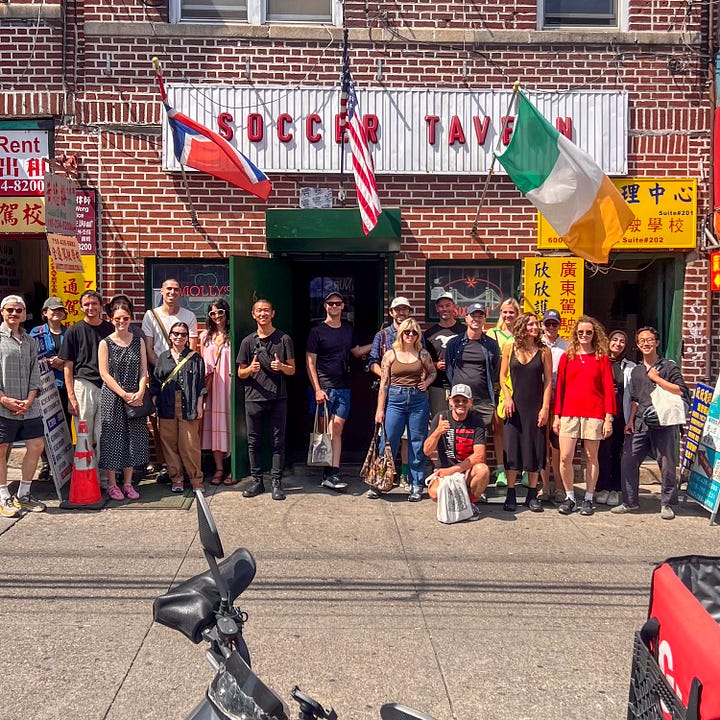
Group Walking
After returning from Canada, I hosted a series of group walks titled Noticing in collaboration with Index Space here in Chinatown. Over the course of four walks, I led a total of seventy-five people, covering topics ranging from public spaces in Midtown, the use of time and space in the Financial District, the lost ecological features of Lower Manhattan, and the Scandinavian history of Sunset Park, Brooklyn.
Though I’ve hosted group walks intermittently over the last couple of years, this was my first time running them on a bi-weekly schedule, and I’ll admit it caused me some anxiety. Each walk required significant time for research, route planning, and preparation. Now that I’m looking back at the series from the rearview mirror, I’m proud to report that it was a massive success.
Group walking is the most direct way to share my work. I often compare it to the oral tradition of storytelling, comedy, or performing music. Each provides an opportunity for direct feedback. These group walks are unusual endeavors in that they tow the line between a traditional walking tour and a collective group experience. Attendees often join without the slightest clue of what to expect, but generally speaking, leave with a deeper understanding of their surroundings—and even a few new friends. To my surprise, the group walks are always highly social events—perhaps because the length, usually between three and four miles, leaves plenty of space for contemplation and discussion over two to three hours. It was such a joy getting to know everyone who attended.
If you missed this series, don’t worry. I will host more in the near future!
Upcoming Class
I’m pleased to announce that I’ll be teaching I Remember, a six-week class at Index Space starting on September 30th, focused on how memory can be used to inspire creative work. This class will only be offered in person, with no remote option for those outside of New York City (though I hope to explore online classes in the future).
This is taken directly from the course website:
Through group walks, lectures, readings, discussions, and artist visits we will survey the ways memory can be used as source material; how it can be documented, archived, accessed, and shaped to produce new bodies of work. Students will study a wide range of artwork, literature, music, film, oral histories, and archives which make distinctive use of memory.
We will supplement our explorations with short exercises and assignments that utilize personal histories, journals, found material, online archives, and self-published publications. We will explore how we can effectively re-contextualize our own memories, construct new meaning, blur the lines between fact and fiction, and develop a broader perspective of one’s lived experience and surroundings.
The premise of the class was developed over the past year, though it had been stewing for quite some time. While attending art school in Chicago, a professor asked us to describe our chicken. The chicken was a reference to the work of Robert Rauschenberg, who—intentionally or not—frequently incorporated chicken imagery into his art throughout his long career. Our professor’s task was for us to identify the recurring element in our own artwork (if possible, at such a young age) when reflecting on our creative output.
While writing this letter, I was reminded of a quote from an artist I can no longer remember that went something like, Artists make only one piece of artwork and spend their entire lives making it over and over again. Does that ring any bells for anyone?
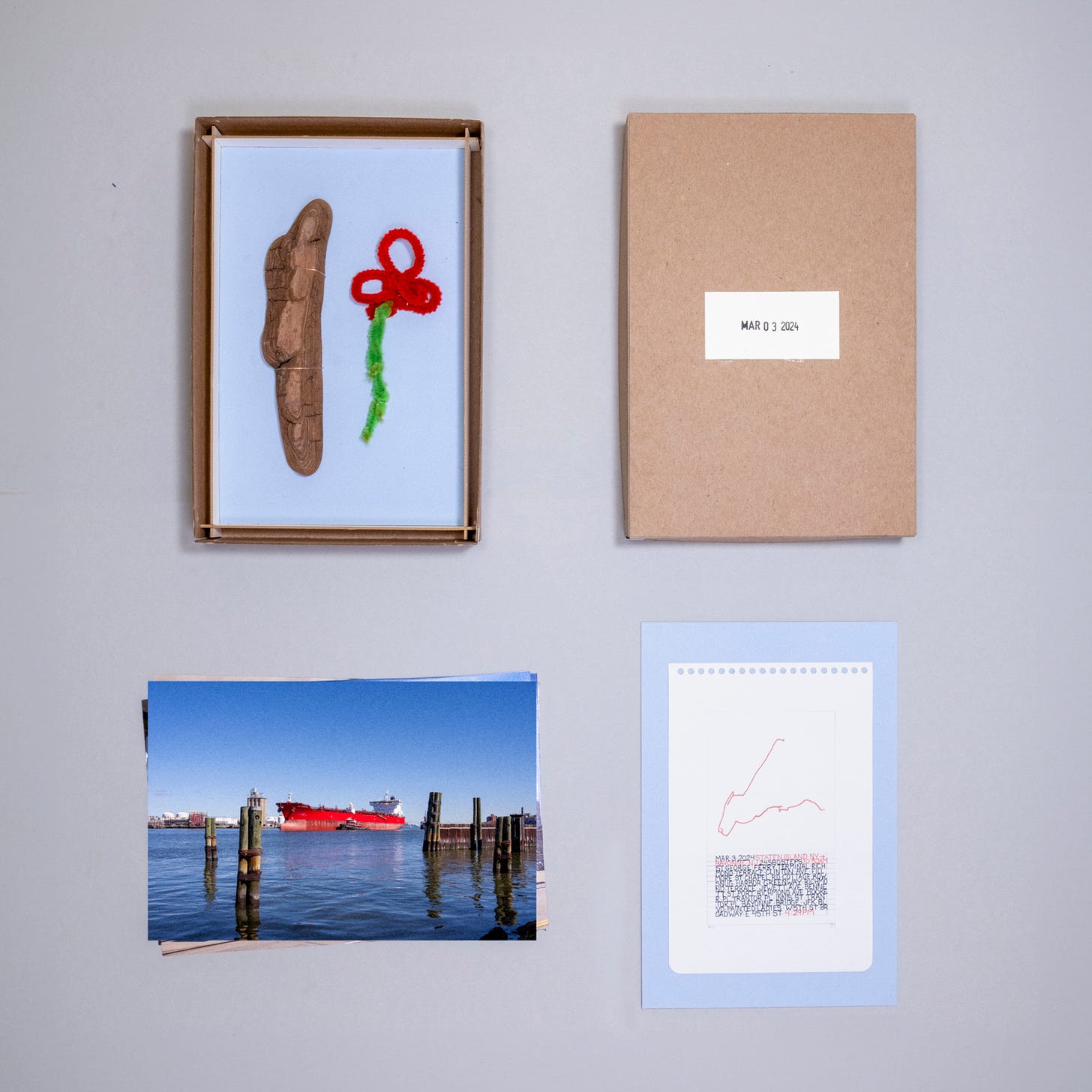
Time has always been my chicken. I’m fascinated with the ways in which it influences our perception of memory and shapes our experiences. I relish work that lets the viewer get close to a memory, a moment in time, or something that no longer exists, yet keeps them separated by a thin pane of glass. Such is the nature of experiences. We can never live them again, but we can revisit them through our memories. Do you ever feel the same way?
Much of the work I’ve completed in the last year—specifically my memory boxes—explores the way in which experience can be reconstructed. I’ve often felt walking is the most immediate way to experience this feeling and explore these concepts, but walking is only one piece of the puzzle. I don’t consider myself a walking artist; rather, walking is simply a tool to speak, gain access, and generate material—often through writing and photographs—for my subject matter.
With all that in mind, you may sign up for my class here!
Patience
According to Starbucks, fall is already here. Pumpkin Spice Lattes are back on the menu—and have been, according to their website, since August 22nd, a full month before summer’s close. Like with most premature seasonal branding (there’s even a term for this—read about 'Christmas creep'), I’m a little saddened. Despite the push from corporate interests, I’m going to bring more patience with me into the fall season. At the time of writing, there are nine days left of summer. Even though I can already feel the air changing, I’m not in any rush to get this year over with.
I’m inherently an impatient person (some are surprised to hear this from someone who walks a lot. Walking might take time, but like drawing, it produces immediate, visible results—I can actively feel and see my body covering distance). Writing my book has been a humbling lesson in patience. Writing asks me to return to the page each day. Slowly but surely, it will get finished. The process of completing a book also asks me to be a dedicated reader in order to become a better writer. Lately, I’ve explored the work of authors I’d overlooked for years—like William Faulkner, Virginia Woolf, Don DeLillo, Vivian Gornick, Ben Lerner, and Emmanuel Carrère.
Reading is a commitment that requires your full attention, unlike a painting, movie, or music, which can often be quickly glanced over or tuned out as background noise. When I read, I’m forced to be patient if I wish to fully experience the work. David Foster Wallace captures the struggle with patience and the depth required for real engagement in Although Of Course You End Up Becoming Yourself, where he says:
"...fiction’s about what it is to be a f—ing human being. And to be a f—ing human being in a way that involves not just some kind of rush for success, the TV moment, the cool moment. But also the slower, harder stuff. That the big stuff that real, real, full human beings care about requires a level of attentiveness and patience and engagement with text that takes time and takes energy and that by definition you have to spend a certain amount of time alone."
I still struggle with patience. Engaging with creative work is often a delicate dance—rooted in the fear that time is slipping away.
This fear runs deeper, too. If I’m honest, it’s tied to a broader anxiety about not having enough time—not just to finish the things I want, but also of life itself slipping away. Maybe it’s shaped by watching the world change so dramatically or by moments that remind us how fragile time can be. Either way, it makes me wonder if my impatience is really about time—and the unknowns that come with it.
So tell me, how are you faring in your corner of the world? As always, thanks for reading and I’ll see you next season with more regularly scheduled programming.
Until next time,
—A.W.
Brooklyn, NY 11220
As always, this is Pedestrian and I’m Alex Wolfe. If you’d like to support this work, please consider sharing with a friend.




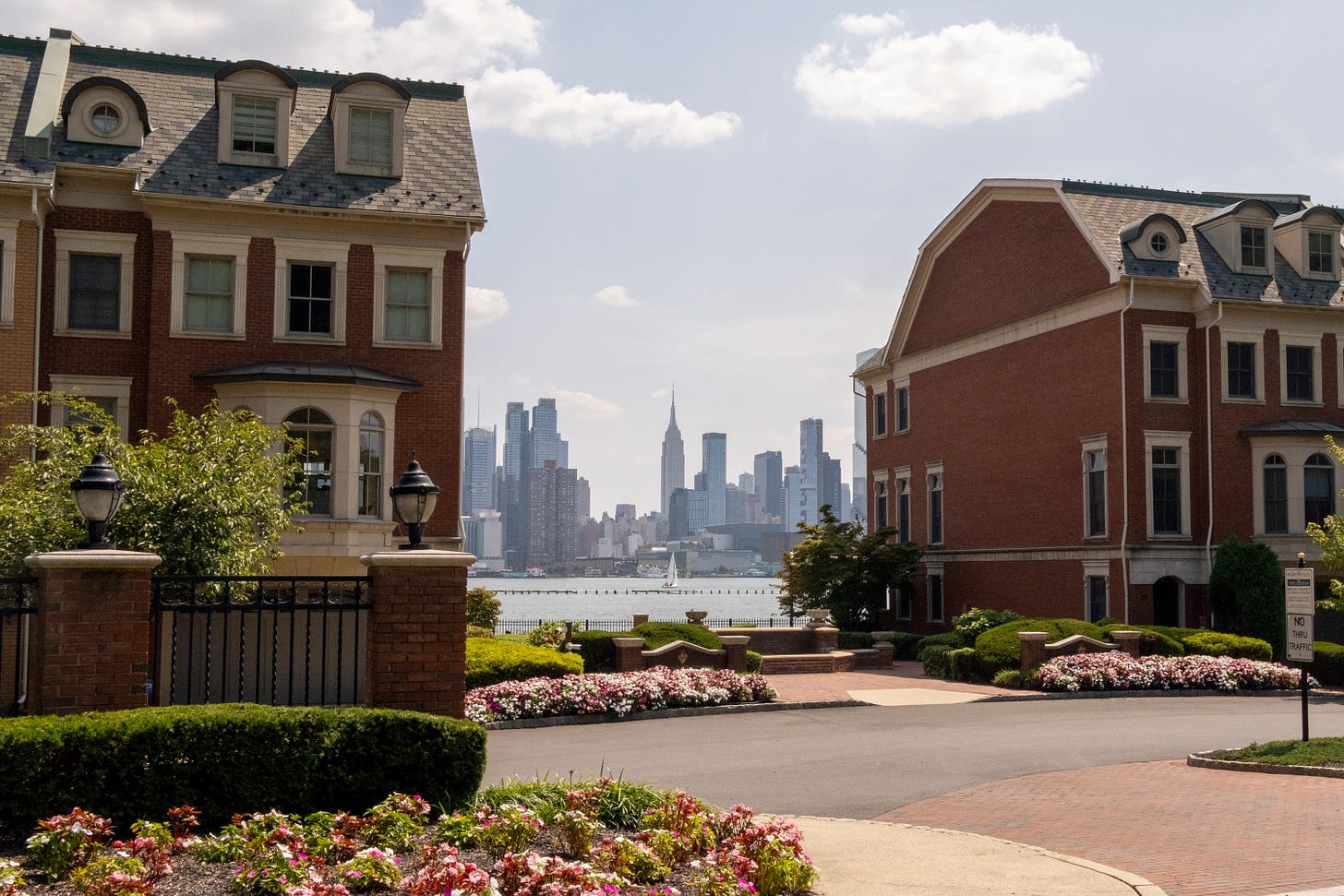
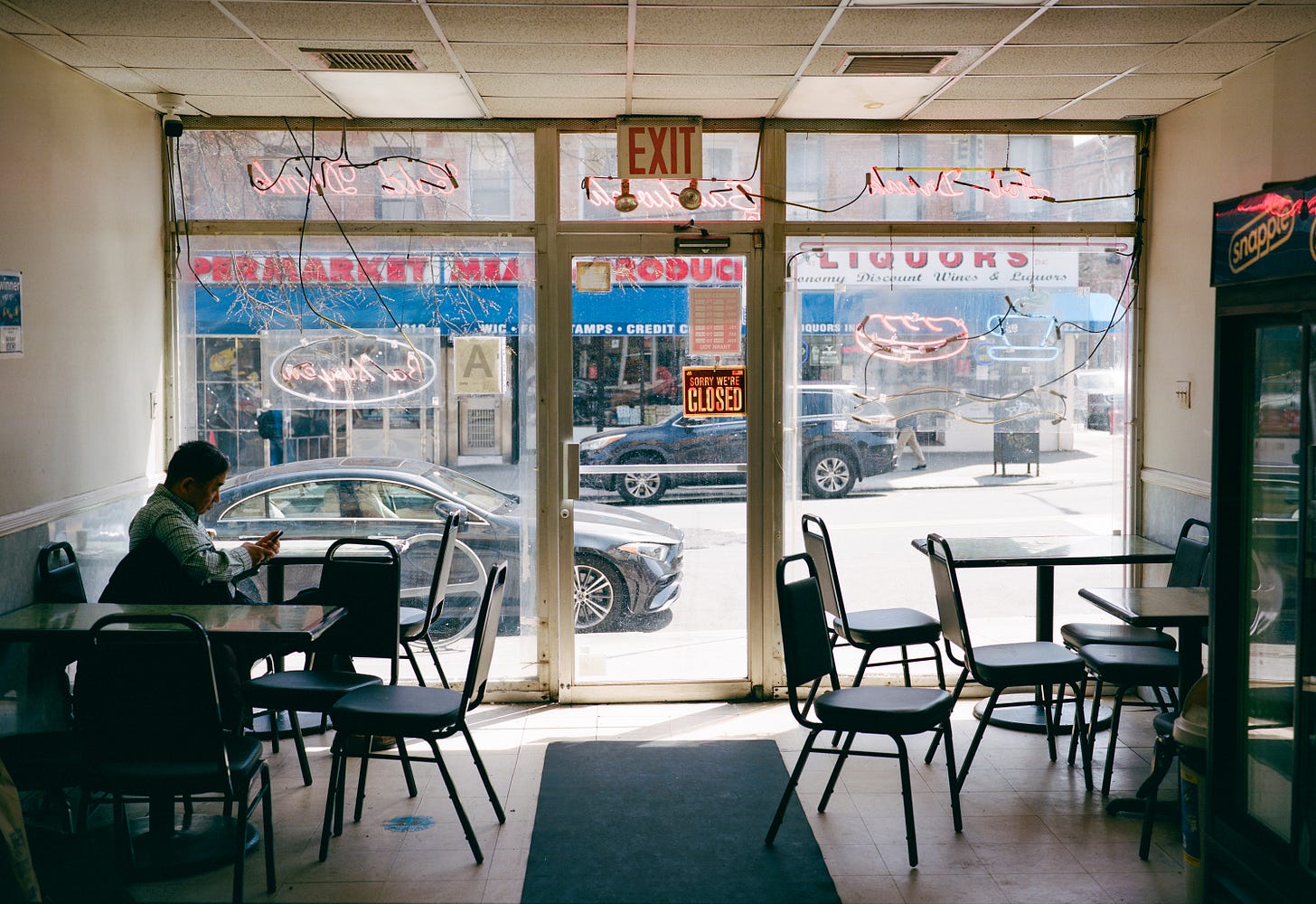
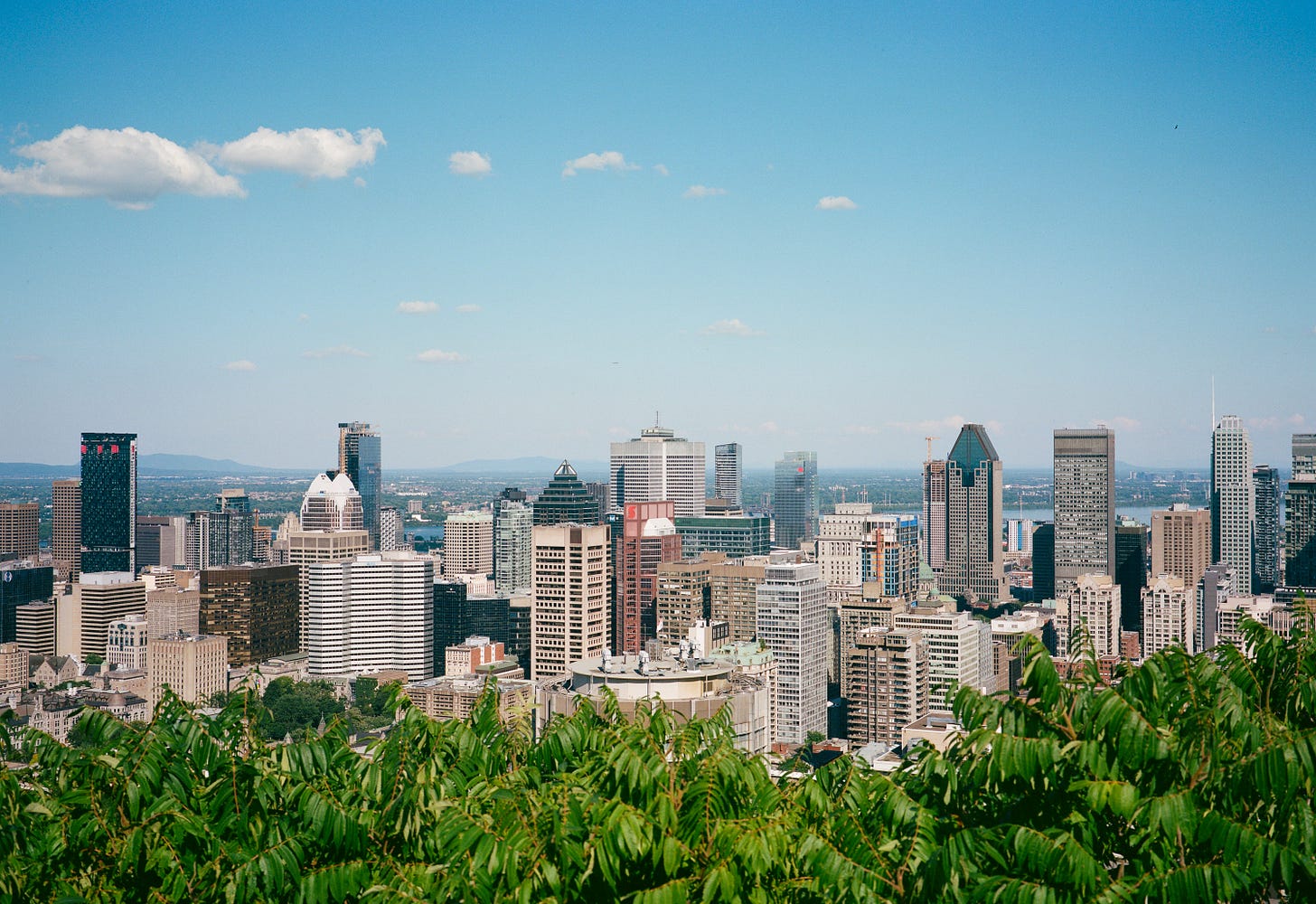
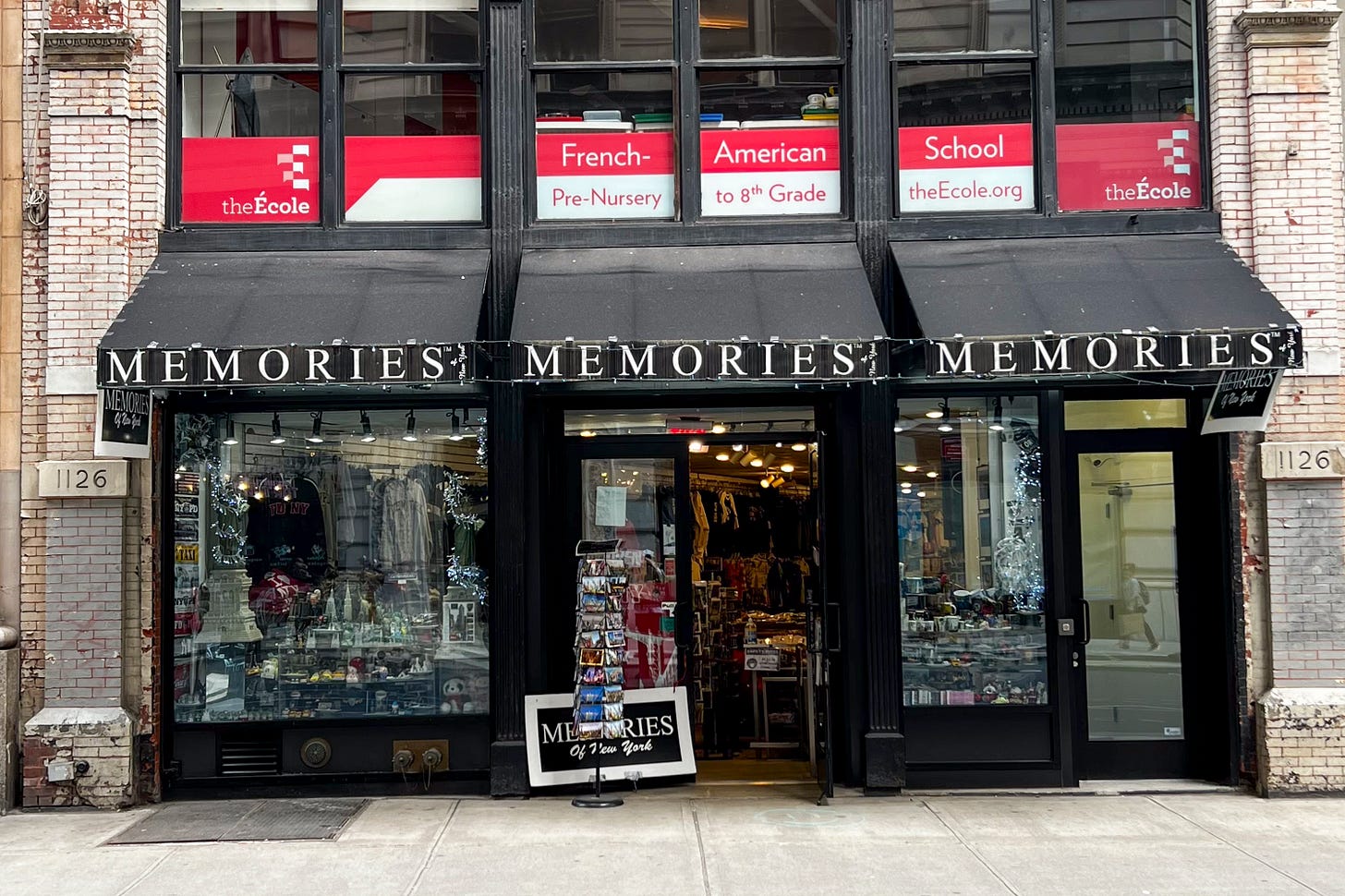
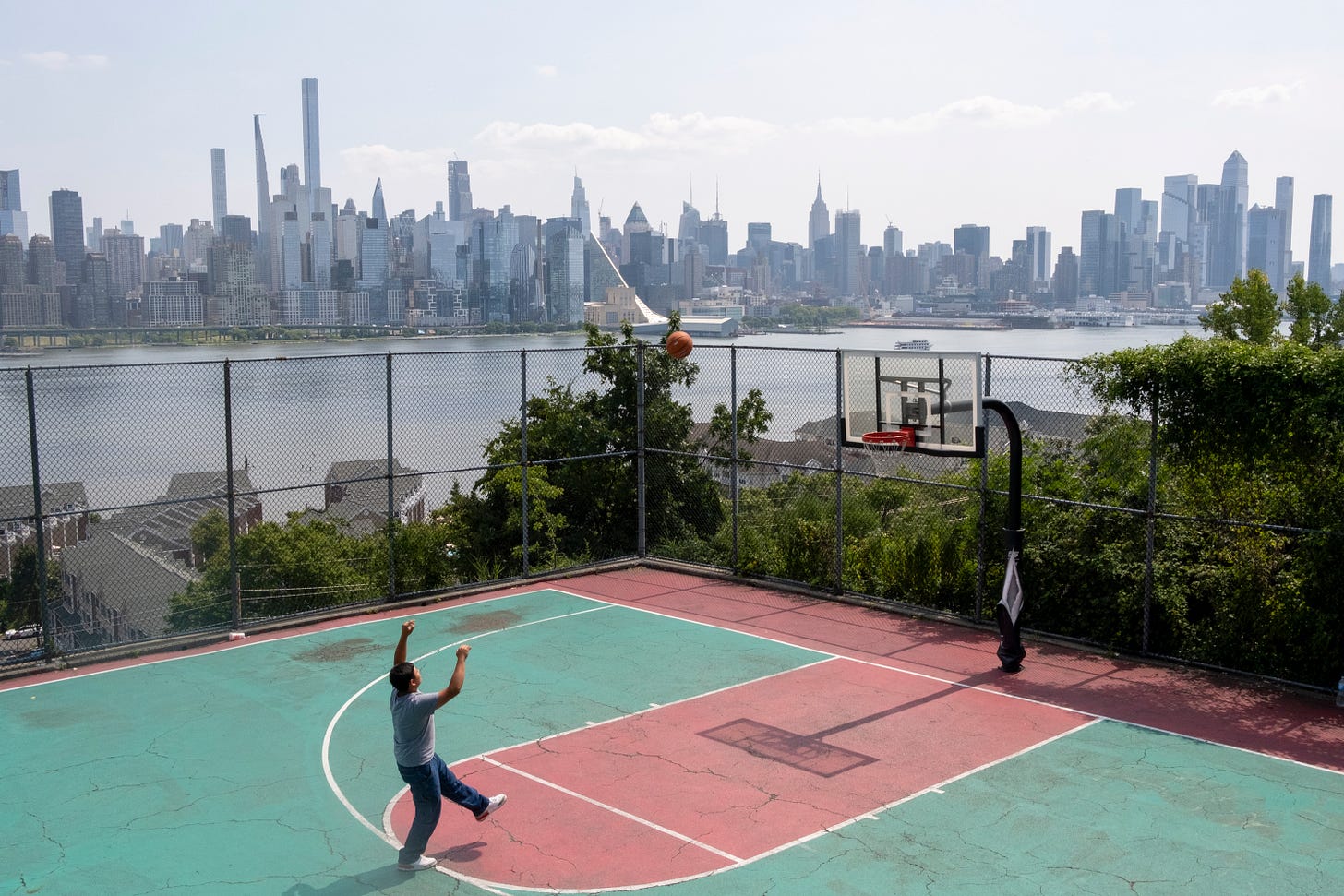
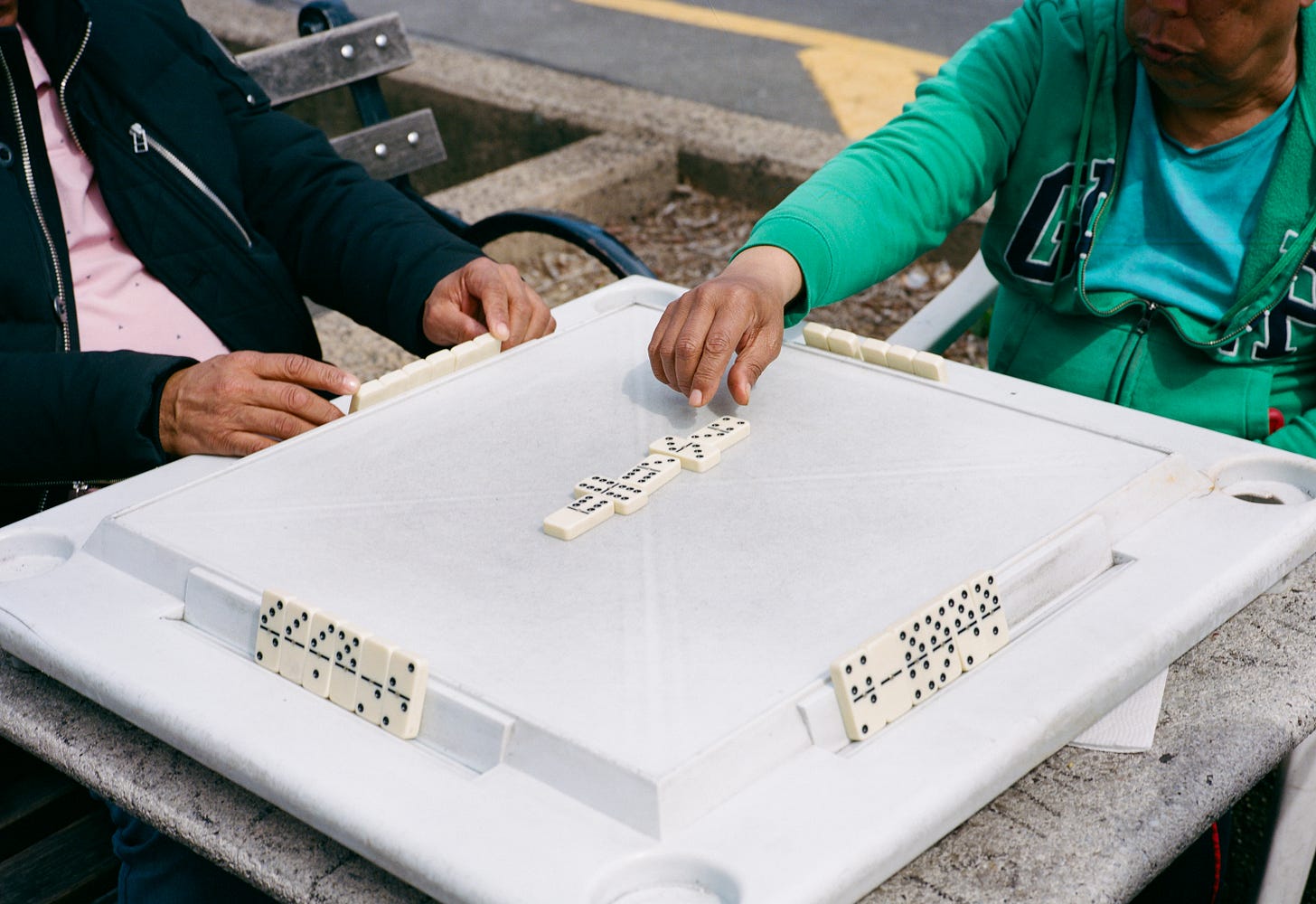
https://mailchi.mp/192books/ian-frazier-september-17?e=54fc1f34e0
Ian Frazier! Seems like this would be a great event for you to both meet Ian and get some information for publishing your novel.